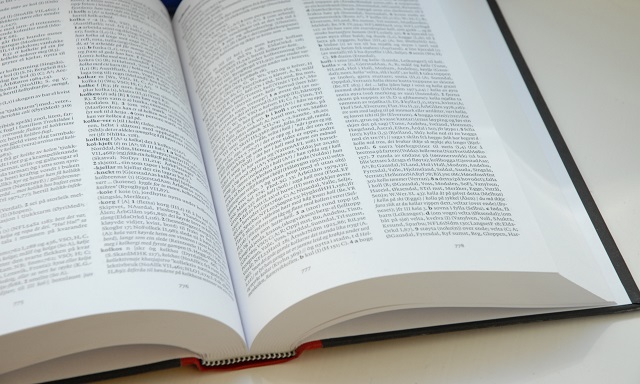If you have
reached proficiency in at least comprehension of Norwegian language, you will
notice there are a lot of dialects. That can be really frustrating for some
people, but for decades Norway has been a special case in dialect use and
attitudes towards dialects. Rural dialects in the country are not only seen as
appropriate in private settings, as in most other European countries, but are
generally used in public contexts, too. Dialects are spoken at the kitchen
table, among friends, in the media, in university lectures and in Parliament.
The
differences are so distinctive that you can tell where someone is from by the
way they speak, sometimes down to which side of town they grew up on. So it
makes sense that people can be pretty proud of their dialect because it
separates them from others.
4 Main Dialect Groups
The
Norwegian dialects are commonly divided into 4 main groups, North Norwegian
(nordnorsk), Trøndelag Norwegian (trøndersk), West Norwegian (vestnorsk), and
East Norwegian (østnorsk). Sometimes Midland Norwegian (innlandsmål) and/or
South Norwegian (sørlandsk) are considered fifth or sixth groups.
The
dialects are generally mutually intelligible, but differ significantly with
regards to accent, grammar, syntax, and vocabulary. If not accustomed to a
particular dialect, even a native Norwegian speaker may have difficulty
understanding it. Dialects can be as local as farm clusters, but many linguists
note an ongoing regionalization, diminishing or even elimination of local
variations.
It is understandable
to have so much linguistic diversity in a country, where many regions have had
little contact throughout the centuries due to geography until at least the
early 20th century. But how can it be possible to have a common written
communication channel among so diverse linguistic families?
Nynorsk: A Matter of Proud and Difference
The answer
is having more than one written language. Yes, Norway has had a long lasting
language struggle and as a result two competing official written standard
varieties – Bokmål and Nynorsk. The latter was an attempt to establish a
written standard on the basis of the Norwegian dialects. This has obviously
contributed to giving Norwegian dialects a relatively high status.
Nynorsk,
Neo Norwegian or New Norwegian is an official written standard for the
Norwegian language, alongside Bokmål. The standard language was originally
created by Ivar Aasen during the mid-19th century, to provide a Norwegian
alternative to the Danish language which was commonly written in Norway at the
time. The official standard of Nynorsk has later on been significantly altered,
and a minor purist fraction of the Nynorsk populace have stayed firm with the
Aasen norm, which is known as Høgnorsk.
The first
systematic study of the Norwegian language was done by Ivar Aasen in the mid-19th
century. In the 1840s he traveled the country and studied the dialects. During
his life traveled the little man over 25,000 kilometers and picked up bits
systematic study of speech around Norway. The result was the written language
is colloquial, what we know today as Nynorsk.
In 1848 and
1850 he published the first Norwegian grammar and dictionary, respectively,
which described a standard Aasen called Landsmål. New versions detailing the
written standard were published in 1864 and 1873.
Aasen’s
work is based on the idea that the dialects had a common structure that made
them a separate language alongside Danish and Swedish. The central point for
Aasen therefore became to find and show the structural dependencies between the
dialects. In order to abstract this structure from the variety of dialects, he
developed basic criteria, which he called the most perfect form. He defined
this form as the one that best showed the connection to related words, with
similar words, and with the forms in Old Norse. No single dialect had all the
perfect forms, each dialect had preserved different aspects and parts of the
language. Through such a systematic approach, one could arrive at a uniting
expression for all Norwegian dialects, what Aasen called the fundamental
dialect, and Einar Haugen has called Proto-Norwegian.
The idea
that the study should end up in a new written language marked his work from the
beginning.
A
fundamental idea for Aasen was that the fundamental dialect should be Modern
Norwegian, not Old Norse. Therefore he did not include grammatical categories
which were extinct from the dialects. At the same time, the categories that
were inherited from the old language and were still present in some dialects
should be represented in the written standard. Haugen has used the word
reconstruction rather than construction about this work.
A Widespread Written Form
Today in
the local communities, 27% of the Norwegian municipalities have declared
Nynorsk as their official language form, and these comprise about 12% of the
Norwegian population. Nynorsk is the majority form of the four counties
Rogaland, Hordaland, Sogn-og-Fjordane and Møre-og-Romsdal, which together comprise
the region of Vestlandet.
Nynorsk is
found in all the same types of places (newspapers, commercial products,
computer programs etc.) as the other Scandinavian standard languages.
Each
municipality and county can declare one of the two languages as its official
language, or it can remain “language neutral”.
The main
language used in primary schools normally follows the official language of its
municipality, and is decided by referendum within the local school district.
The number of school districts and pupils using primarily Nynorsk has decreased
since the top in the 1940s, even in Nynorsk municipalities. As of 2011, 12.8%
of pupils in primary school are taught Nynorsk as their primary language.

Source:
Lovdata | A map of the official language forms (målform) of Norwegian
municipalities.
Conflict and Resistance
But of
course, this language duality is not conflict-free. From the outset, Nynorsk
has been met with resistance. With the advent and growth of the mass media, the
exposure to the standard languages has increased, and Bokmål’s dominant
position has come to define what is commonly regarded as “normal”.
This may explain why negative attitudes toward Nynorsk are common, as is seen
with many minority languages. This is especially prominent in school, which is
the place most Bokmål-using Norwegians first and most extensively need to
relate to the language.
Some
critics of Nynorsk have been quite outspoken about their views. For instance,
during the 2005 election, the Norwegian Young Conservatives made an
advertisement that included a scene where a copy of the Nynorsk dictionary was
burned. After strong reactions to this book burning, they chose not to show it.
About IvarAasen
Aasen was
born at Åsen in Ørsta (then Ørsten), in the district of Sunnmøre, on the west
coast of Norway. His father, a small peasant-farmer named Ivar Jonsson, died in
1826. He was brought up to farm work, but he assiduously cultivated all his
leisure in reading. An early interest was botany. When he was eighteen, he
opened an elementary school in his native parish. In 1833 he entered the
household of H. C. Thoresen, the husband of the eminent writer Magdalene
Thoresen, in Herøy (then Herø), and there he picked up the elements of Latin.
Gradually, and by dint of infinite patience and concentration, the young
peasant became master of many languages, and began the scientific study of
their structure. Ivar single-handedly created a new language for Norway to
become the “literary” language.
About 1841
he had freed himself from all the burden of manual labour, and could occupy his
thoughts with the dialect of his native district, Sunnmøre; his first
publication was a small collection of folk songs in the Sunnmøre dialect
(1843). His remarkable abilities now attracted general attention, and he was
helped to continue his studies undisturbed. His Grammar of the Norwegian
Dialects (Danish: Det Norske Folkesprogs Grammatik, 1848) was the result of
much labour, and of journeys taken to every part of the country. Aasen’s famous
Dictionary of the Norwegian Dialects (Danish: Ordbog over det Norske
Folkesprog) appeared in its original form in 1850, and from this publication
dates all the wide cultivation of the popular language in Norwegian, since
Aasen really did no less than construct, out of the different materials at his
disposal, a popular language or definite folke-maal (people’s language) for
Norway.
By 1853, he
had created the norm for utilizing his new language, which he called Landsmaal,
meaning country language. With certain modifications, the most important of which
were introduced later by Aasen himself, but also through a latter policy aiming
to merge this Norwegian language with Dano-Norwegian, this language has become
Nynorsk (“New Norwegian”), the second of Norway’s two official
languages (the other being Bokmål, the Dano-Norwegian descendant of the Danish
language used in Norway at Aasen’s time). An unofficial variety of Norwegian
more close to Aasen’s language is still found in Høgnorsk (“High
Norwegian”).
Språkåret
2013 (The Language Year 2013) celebrated Ivar Aasen’s 200 year anniversary, as
well as the 100 year anniversary of Det Norske Teateret. The year’s main focus
was to celebrate linguistic diversity in Norway. In a poll released in
connection with the celebration, 56% of Norwegians said they held positive
views of Aasen, while 7% held negative views. On Aasen’s 200 anniversary, 5
August 2013, Bergens Tidende, which is normally published mainly in bokmål,
published an edition fully in nynorsk in memory of Aasen.
Talking About Medication Costs Yields Rewards






